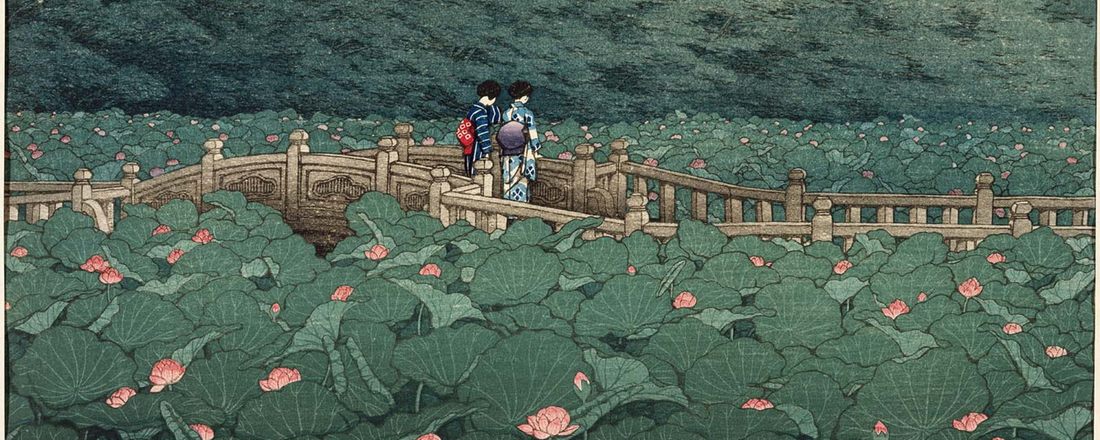
The Serene Woodblock Prints of Hasui Kawase
Share
Hasui Kawase woodblock prints (ukiyo-e)
 Among the most acclaimed Japanese shin-hanga print designers of the 20th century is Hasui Kawase (1883-1957). Hasui Kawase is renowned for his landscape woodblock prints, often depicting scenes of rural Japan in the rain or snow. Through masterful technique and poetic style, Hasui created evocative images that provide a nostalgic glimpse into old Japan.
Among the most acclaimed Japanese shin-hanga print designers of the 20th century is Hasui Kawase (1883-1957). Hasui Kawase is renowned for his landscape woodblock prints, often depicting scenes of rural Japan in the rain or snow. Through masterful technique and poetic style, Hasui created evocative images that provide a nostalgic glimpse into old Japan.

Roots and horizons :
Born in Tokyo, Hasui originally studied under noted printmaker Kiyokata Kaburaki before pioneering his own unique style with Shin-hanga movement.
Shin-hanga was an art movement in early 20th-century Japan, during the Taishō and Shōwa periods, that revitalized the traditional ukiyo-e art rooted in the Edo and Meiji periods (17th–19th century). While exploring new themes and means of representation, it maintained the traditional ukiyo-e collaborative system (hanmoto system) where the artist, carver, printer, and publisher engaged in division of labor, as opposed to the parallel sōsaku-hanga (creative prints) movement.

Polychrome woodblock print made around 1900 as a kuchi-e (口絵) frontispiece by the artist Kaburagi Kiyokata - Kawase Hasui's master
(See Kawase Hasui's magnificent preparatory drawings by the master)
Landscapes and themes :
Hasui forged a reputation early on for his illustrations of beloved Japanese sites like Kamakura, Nikko, and the Inland Sea. Hasui also travelled the Hokuriku, San'in, and San'yō regions. Following in the footsteps of his predecessors, he arranges his woodcuts in the form of series : Twelve Views of Tokyo, Eight Views of the Southeast, and the Souvenirs of Travel.

“Konjikido in Snow, Hiraizumi” (1957) - Kawase Hasui's sketchbook
Representing the elements of nature


Throughout his career, Hasui traveled extensively around Japan, constantly finding new subjects from rice fields to village shrines. While rooted in tradition, he incorporated just enough Western perspective and anatomy to develop an evolved, hybrid Japanese print style.
Kawase Hasui's works meld technical excellence with emotional depth. The landscapes he etched preserve for eternity a Japan of times past. For all lovers of art and Japanese culture, Hasui's prints are not to be missed. They provide a window into a serene, contemplative world.
Our collection of Japanese woodblock prints by Kawase Hasui
